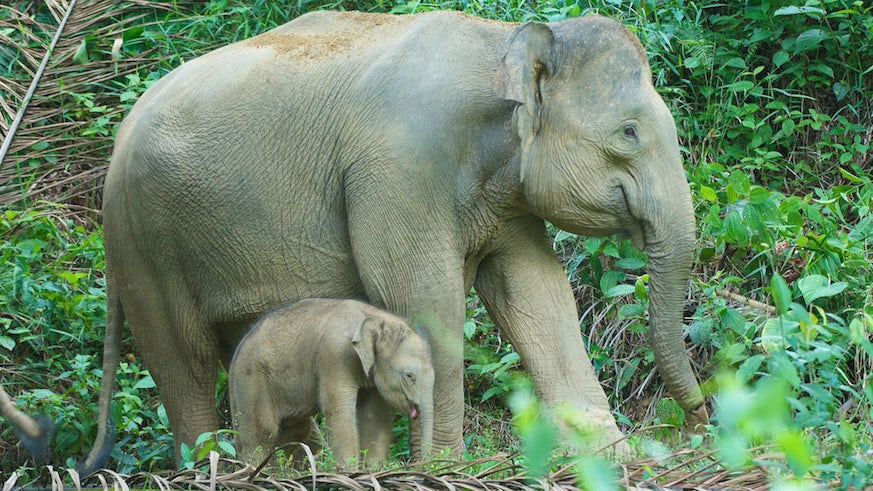Degraded forest is vital for elephant conservation
16 April 2018

Degraded areas of forest, previously cleared for logging or agriculture, are ideal habitats for elephants in Sabah, finds new research by Cardiff University, the Danau Girang Field Centre, the Sabah Wildlife Department and the Carnegie Institution for Science.
The low canopy height of degraded forest areas provide a preferential environment for the Bornean elephants, despite being considered areas of low-quality forest.
Luke Evans, a postdoctoral researcher at the Carnegie Institution for Science and Danau Girang Field Centre, said: “Our study indicates that forests with a mean canopy height of thirteen meters were those most utilized by Bornean elephants.
“These forests are consistent with degraded landscapes or those recovering from previous logging, or clearance.”
The collaborative research tracked the movements of elephants in Borneo through GPS collars and used airborne laser-based imaging to analyse Sabah’s forests, giving a three-dimensional map of the rainforest canopy height and structure.
Twenty-nine elephants were tracked, providing high resolution data spread across several years, which gave the researchers a new and in-depth idea of the elephant’s habitat preferences.
Greg Asner, Carnegie Airborne Observatory and Carnegie Institution for Science, said: “Our mapping of Sabah’s forests is unique in that it provides accurate and detailed spatial information on forest structure.
“Combined with the GPS data for the elephants, the connection between relatively low-statured tree canopies and elephant habitat emerged in a way that was previously unknown.”
Areas of forest with shorter canopies are likely to be targeted for conversion into areas of agriculture, and the new research highlights that this could have devastating consequences for conservation of elephants in Borneo.
Funded by the Rainforest Trust and spearheaded by Sabah Forestry Department, this project is part of an ongoing effort to increase protected areas in Sabah to thirty percent of total land area.
Benoit Goossens, Danau Girang Field Centre and Cardiff University, said: “The danger is that a large proportion of these lower-stature forest habitats could be prime candidates for conversion to large-scale agriculture before their importance is fully realized.
“The hope is that this study will reinforce the importance of protecting habitats perceived as low-quality, rather than solely old growth, high carbon, forests.”
Share this story
The centre is a collaborative research and training facility based in Sabah, Malaysia.




